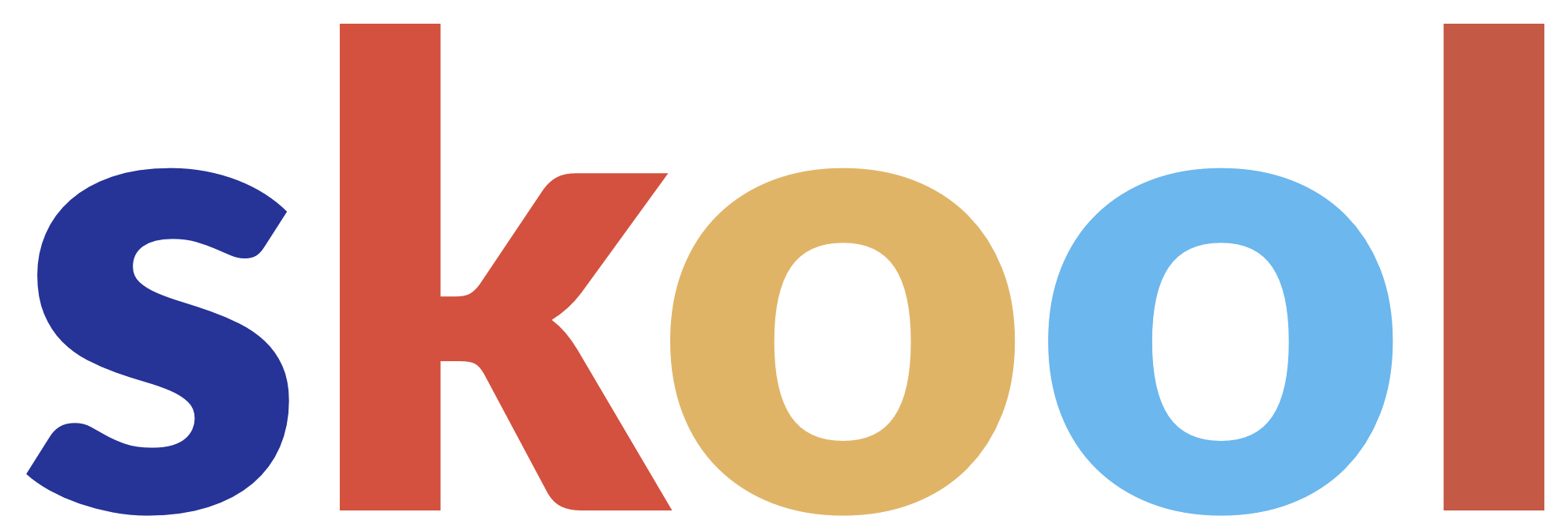Skool’s revolutionary online learning platform is changing how businesses and individuals are educated. It is an LMS that gives users everything they need to design and deliver online training programs and courses of high-quality.
Skool has a few key differences from other learning platforms. Skool is very easy to use and maintain. Even those with no previous experience can easily and quickly create and deliver engaging online course.

Here is a short video overview of Skool by Scott Weberg from his YouTube channel for those who want a more visual experience. However, if you want a more in-depth review, you can also read the whole review below.
How Does Skool Work? Skool Training Videos
As an online learning platform, Skool allows users to create and deliver high-quality courses and training programs. To get started, users create a Skool account and then create courses or training programs. Students can access course materials such as videos and quizzes. Instructors can track student progress and provide feedback.
Here is an overview of Skool‘s workings:
How to Create a Skool Profile:
- Click on “Sign up” at the Skool site.
- Enter your name, email, and password.
- Choose a pricing plan and click on the “Sign Up” button.
Creating a Course or Training Program:
- After creating a Skool profile, click the “Create Courses” button.
- Enter the course name and program description.
- Select the topics that you want to cover in your course or training program.
- Add learning materials, such as videos and quizzes.
- By clicking “Publish”, you can make the course or training available to your students.
Enrolling a Course or Program of Training:
- Students can browse through the courses and training programs that are available on Skool.
- Once they have found a course or training program that they are interested in, they can click on the “Enroll” button. Skool Training Videos
- Students must create a Skool profile if they don’t have one already.
- After creating an account, users will have access to the course materials or training programs.
Tracking and Providing Feedback on Student Progress:
- Instructors can track student progress by viewing the student activity reports.
- Instructors can also provide feedback to students by commenting on their assignments or by sending them private messages.

> > Click Here to Try Skool Now< <
Skool Features
Community
Skool’s features for community management allow you to build and manage a vibrant community around online training courses and programs. Members can create and share their own content, such as articles, blog posts, and videos. You can create forums and groups where members can discuss and connect the material.
Through this Feature, Skool can:
- Content generated by members: They can share and create their own articles, blogs, videos, or podcasts. This helps to create a more dynamic and engaging community for your members.
- Groups and forums. You can create forums and groups to allow your members to discuss and connect on specific topics related to your online courses. This can foster a feeling of community and cooperation among your members.
Classroom
Skool classroom features allow you to easily create and deliver engaging courses online. Your courses can have a range of different content, such as videos, quizzes or assignments, discussion forums, etc. Skool provides a range of features for tracking student progress.
Some of these features include:
- Skool offers a wide range of tools for creating courses, including quizzes and assignments. This makes it simple to create high-quality online courses, even if you have no prior experience.
- Skool’s detailed tracking of students’ progress allows you to see what your children are up to and offer them the support they require.
Calendar
Skool’s calendar feature makes it easy to organize and schedule online and offline events for your members. You can create recurring meetings, like weekly webinars. You can also create one-time events, such as workshops or conferences.
The following features are included:
- Recurring Events: You can create events that repeat, such as monthly meetups or weekly webinars. You can save time and effort by not having to create every event separately.
- One-time Events: You can create one-time events, like conferences or workshops. This makes it easy to promote and manage your events on Skool.
Leaderboards
Skool’s leaderboards feature allows you to track member activity and reward them for their participation. This can encourage your employees to participate in your training courses. You can create custom leaderboards for different activities, such as completing assignments or participating in discussions.
Included in these features:
- Customizable leaderboards: You are able to create leaderboards that reflect different activities. For example, you can create leaderboards for completing assignments, taking part in discussions, or creating original content. This allows you reward your users for the most important activities to you.
- Gamification: Skool’s leaderboards, badges, and other tools can be used to gamify online courses and training. This can help to make learning more fun and engaging for your members.

> > Click Here to Try Skool Now< <
Ease of use
In terms of use, Skool is easy to use because it provides a one-stop solution for all of the needs of course creators, including course creation, community building, student progress tracking, and student participation rewarding. Skool’s user interface is also very intuitive and easy to learn.
Skool streamlines the difficult process of course creators using different tools to organize their community by giving them a platform that allows them to do all they need. This saves course creators time and effort, and it also makes it easier for them to stay organized and focused on their work. Skool Training Videos

> > Click Here to Try Skool Now< <
Skool Use Cases
Skool has a variety of uses. Here are some examples.
- Online Courses
Skool’s course creation feature allows users to create and sell online courses. Skool allows course creators to manage their students and accept payments. - Subscription Memberships:
Skool subscription feature allows users create and sell subscriptions-based memberships. Members can receive exclusive content as well as participate in the community discussion and receive help from the course creator. - Group Funnels:
Skool’s Group Funnel feature allows users create and manage sales funnels. Users can create a landing page, opt-in form, email sequences, and more. - Coaching Programs:
Skool offers a coaching program feature which allows users to design and sell their own coaching programs. Skool allows users to schedule appointments, accept payments, and manage clients. - Masterminds
Skool’s feature Mastermind allows users create and sell mastermind group. Members can join group discussions, get support from the creator of the course, and network. - Support Forums
Skool’s support forum allows users to create and manage forums to support their courses or products. Skool can be used by users to moderate discussions, provide answers to questions, and support their customers. - SaaS:
Skool is a tool that can be used to deliver SaaS-based products. Skool can be used, for example, to create and deliver SaaS products that help businesses manage their online training programs. - Influencer:Influencers are able to use Skool as a tool to create and engage their communities. For example, an influencer could use Skool to create and deliver exclusive content to their community members or to host live webinars and events.

> > Click Here to Try Skool Now< <
Who Should Use Skool?
As a versatile online learning platform, Skool can be used by individuals, businesses, and organizations of all sizes. If they want to create and sell online courses or training programs, they will find good use for Skool.
Some examples are:
Businesses and organizations can use Skool to:
- Train employees on new skills and procedures
- Onboarding is a training session for new employees.
- Create and deliver educational programs for customers
- Live webinars and events
- Build a Community around your Brand
Skool is a great tool for individuals who want to:
- Create and sell online training or courses
- Develop an audience and community for your experts Skool Training Videos
- Host live webinars and events
- Connect with other professionals in their field

> > Click Here to Try Skool Now< <
Pros and Cons
Pros:
- Skool provides a unique collection of features to support community-centered programming.
- The platform offers an excellent user experience, and it is extremely easy to learn.
- Skool is a platform that has a growing community.
- The platform simplifies the cumbersome process for course creators to use different tools to organize their communities together.
- Skool has a visual timetable that lets members view everything in the local timezone. They can also receive email reminders.
Cons:
- Skool does not yet have certain essential features like video hosting.
- The price may be too high when you consider what other tools course creators need.
- Skool can be limited to those course creators that need the full tech stack.

> > Click Here to Try Skool Now< <
Skool Pricing Plans
Skool’s pricing structure is unique compared to most SaaS platforms. Skool offers one pricing plan at $99 per month that includes all the features.
- Unlimited users
- All Courses Available
- Storage Unlimited
- All community features
- All course hosting features
- Gamification is available in all its features
- All Other Features
Aside from that, Skool also offers a 14-day free trial, which allows users to try the platform out so that they can get a feel before they go all in on the platform.

> > Click Here to Try Skool Now< <
Conclusion
Skool provides a powerful, affordable platform to build communities, host courses, or gamify learning. It is a good choice for course creators, business owners, and individuals who want to achieve their goals and learn as a community.
Skool offers a 14-day free test to help you decide if the software is for you. You can also check out reviews of other users for their feedback.
Skool has a lot to offer anyone who is looking to create an active community, and to deliver courses of high quality to their learners.

> > Click Here to Try Skool Now< <
Skool Frequently Asked Questions Skool Training Videos
Who is Skool aimed at?
Skool can be used by anyone who is interested in building a community and engaging with it around a common interest or goal. This includes:
- Course creators
- Businesses
- Nonprofit organizations
- Individuals
How do I get started with Skool?
To get started with Skool, create an account on the Skool website. You can build your community once you have an Skool account by adding members, creating forums and uploading content.
Can I sell my courses using Skool?
Skool allows you to sell your course. Skool includes a wide range of features that will help you to sell your courses.
- Memberships are available for a fee
- Course Analytics
- Gamification features.
Does Skool charge fees per transaction?
Yes, Skool charges a 2.9% + 30c fee per transaction.
When does Skool payout?
Skool will pay out your available balance each Wednesday to your bank account.
What currency does Skool use?
Skool prices are all in USD. Your local currency is used for payouts.
What is Skool’s refund policy?
Skool’s policy is to let creators offer refunds to members at their discretion. Skool can issue refunds at their discretion depending on the circumstances. Skool won’t refund most creators in the majority of cases.
